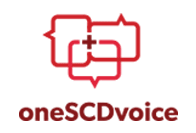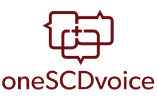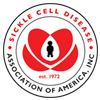Trusted Resources: Evidence & Education
Scientific literature and patient education texts
Multicenter COMPACT study of COMplications in patients with sickle cell disease and utilization of iron chelation therapy
source: Current Medical Research and Opinion
year: 2015
authors: Jordan L, Adams-Graves P, Kanter-Washko J, Oneal PA, Sasane M, Vekeman F, Bieri C, Magestro M, Marcellari A, Duh MS
summary/abstract:BACKGROUND:
Over the past few decades, lifespans of sickle cell disease (SCD) patients have increased; hence, they encounter multiple complications. Early detection, appropriate comprehensive care, and treatment may prevent or delay onset of complications.
OBJECTIVE:
We collected longitudinal data on sickle cell disease (SCD) complication rates and associated resource utilization relative to blood transfusion patterns and iron chelation therapy (ICT) use in patients aged ≥16 years to address a gap in the literature.
RESEARCH DESIGN AND METHODS:
Medical records of 254 SCD patients ≥16 years were retrospectively reviewed at three US tertiary care centers.
MAIN OUTCOME MEASURES:
We classified patients into cohorts based on cumulative units of blood transfused and ICT history: RESULTS:
Cohorts had 69 (C1), 91 (C2), and 94 (C3) patients. Pain led to most hospitalizations (76%) and emergency department (ED) (82%) visits. Among transfused patients (C2+C3), those receiving ICT were less likely to experience SCD complications than those who did not (RR [95% CI] C2 vs. C3: 1.33 [1.25-1.42]). Similar trends (RR [95% CI]) were observed in ED visits and hospitalizations associated with SCD complications (C2 vs. C3, ED: 1.94 [1.70-2.21]; hospitalizations: 1.61 [1.45-1.78]), but not in outpatient visits.
CONCLUSIONS:
Although the most commonly reported SCD complication among all patients was pain, patients who received ICT were less likely to experience pain and other complications than those who did not. These results highlight the need for increased patient and provider education on the importance of comprehensive disease management.
DOI: 10.1185/03007995.2014.998815
read more full text
Related Content
-
Hydroxyurea for Sickle Cell DiseaseHydroxyurea is a medicine that doctors h...
-
Trends in Sickle Cell Disease-related Priapism in U.S. Children’s HospitalsOBJECTIVE: To define rates of priapism ...
-
Endari reduces pain crises, hospitalizations in sickle cell patients, phase 3 trial showsTreatment with Endari (L-glutamine) le...
-
The Upside of Bad GenesFor the last two decades, they’ve had ...
-
Emmaus Medical, Inc. Selects AmerisourceBergen to Support the Launch of EndariTM (L-glutamine oral powder)AmerisourceBergen, a global healthcare s...
-
Spectra Optia Device Save Way to Treat Sickle Cell While Using Less Blood Cell Packs, Study FindsThe blood-separation device Spectra Opti...
-
Effort set to help sickle cell patients manage medsVanderbilt University Medical Center is ...
To improve your experience on this site, we use cookies. This includes cookies essential for the basic functioning of our website, cookies for analytics purposes, and cookies enabling us to personalize site content. By clicking on 'Accept' or any content on this site, you agree that cookies can be placed. You may adjust your browser's cookie settings to suit your preferences. More Information
The cookie settings on this website are set to "allow cookies" to give you the best browsing experience possible. If you continue to use this website without changing your cookie settings or you click "Accept" below then you are consenting to this.




 +myBinder
+myBinder
